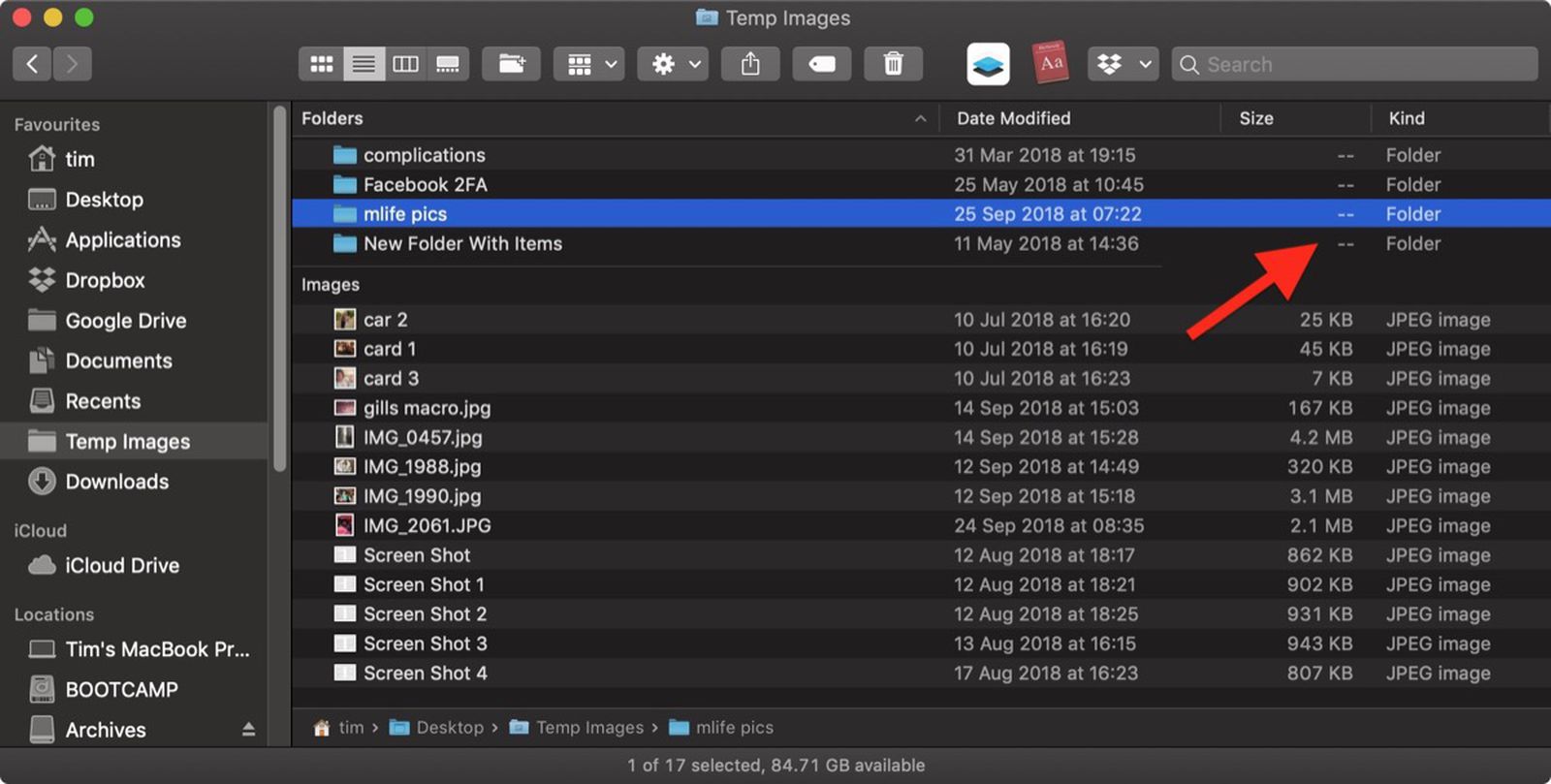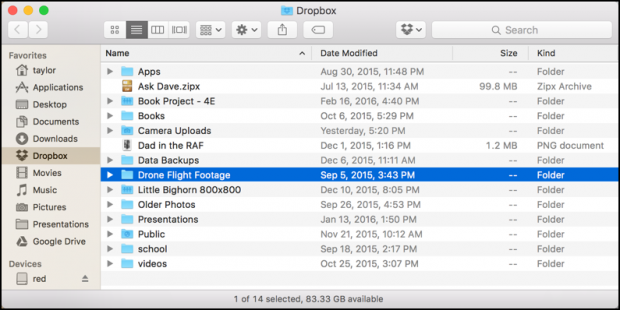Here is what's special in the Cloud Duplicate Finder (CDF): 256-bit encryption, Dropbox-authorized API, 0-level storage of your files and passwords, and a 100% online service to remove duplicate files from your Dropbox. This web-application allows you to login to your Dropbox account and scan duplicate data on the cloud ? You will not download any of your files to the local computer or Mac!
How To Clean Up Duplicates in the Dropbox?
Oct 24, 2016 If you wish to remove DropBox from finder sidebar, right click on DropBox and click on “Remove from Sidebar.” There are a number of popular cloud storage services like OneDrive, Box, Google Drive, Amazon Cloud Drive, iCloud Drive (only for Apple ecosystem). However, Dropbox is found to be the most user-friendly by a lot of users.
- 3) Open Finder, visit your Dropbox folder. Your folder and its new shortcut are now listed in Finder's menubar under 'Go / Recent Folders'. Assuming you visit your Dropbox folder frequently enough, this will work in Finder navigation. It doesn't work within other app's 'Save' or 'Open' dialogs, unfortunately.
- Open your Dropbox folder in Finder. Right-click on on a file. Select Get Info. Learn how to check file size on dropbox.com. I have files that look similar but have different extensions. If you have files that look similar but have different extensions, they may be in a different file format.
Finding duplicate files manually is difficult and not worth your precious time. Use your browser to create an account on the Cloud Duplicate Finder website, and authenticate the application to scan files in your Dropbox cloud.
Why Cloud Duplicate Finder (CDF) to Scan Dropbox?
Supports Common File Types
Cloud Duplicate Finder is powered with ultra-fast algorithms that can scan most file-types easily; It can identify the documents, photos, videos, music files and archives.
Quick & Thorough Scan
Scan Filters in the CDF allow you to do a custom hunt for unwanted duplicate files. It is fast, accurate, and easy-to-use.
Protects User Privacy
CDF uses Authorized APIs of the Google Drive, OneDrive, Dropbox and Box services. It does not store your data on its servers. Rest assured, your data is fully protected, and CDF Team has no access to even single byte of your data.
Cross-Platform Compatibility
The browser-based tool does not require any kind of download or installation. You can access CDF application from your computer or tablet. All you need is an active Internet connection and a web browser to initiate a scan.
Saves Bandwidth
Because Cloud Duplicate Finder works online, there is no need to separately download data from your Dropbox account to your PC.
The Procedure
Step # 1: Grab CloudDuplicateFinder.com's Free Account
- Open your browser and type https://www.cloudduplicatefinder.com in the Address Bar, and press ENTER.
- Look for an option to Sign-Up on the top right.
- Type in your details and wait for the verification email to arrive.
- A unique verification link will be emailed to you to activate your account in no time.
- If you don't receive an email after a reasonable amount of time, check the Junk/ Spam folder.
- Once you're verified, you're all set to go.
Step # 2: Dropbox Authentication
- Next, click on the Dropbox icon on the tabbed interface.
- Click on the Add New Drive button and type in your Dropbox credentials.
- At this point, you'll be asked to confirm file access permissions.
- Remember, Cloud Duplicate Finder will neither store your password nor access your files.
Step # 3: Choose Folders To Scan
Once your drive's data is loaded, you will see all your Dropbox folders listed on the left panel of the application user interface.
Select folders and start the de-dupe process online.
Step # 4: Choose File Types To Scan (Optional)
CDF gives you the freedom to scan files irrespective of their types.
If you are looking to find all types of duplicates, head to the Step # 5 below.
Step # 5: Start Scan & Dedupe Dropbox

- Going ahead, click on the large Scan button and wait for a while.
- If you've tens of GBs of data, the process might take a bit longer.
- After the scan is finished, you'll get a list of duplicate and original files.
- The next step is figuring out whether you need to keep newest or oldest versions of those files.
- Use the Select Duplicates button in the application, and review the file-selection options.
- Finally, click on Select Action and choose to move selected duplicates to the Trash.

That's how simpler it is to get rid of unwanted duplicates, organize your data and reclaim the lost storage-space.
Nowadays, a significant number of people use Dropbox as it is one of the best cloud storage services that enables people to manage and share files, pictures, videos and more. In simple words, Dropbox is an online backup and files hosting service which is used extensively to store and share photos.
Clone Files Checker follows Google Software Principles
Dropbox can be used on many electronic devices such as a laptop, personal computers, mobiles, and tablets. Dropbox offers different type of accounts keeping in view the requirements of different kinds of users, like Plus and Professional for individuals, and Standard and Advanced for teams.

Dropbox easily syncs all the files from the devices that a user has logged into (from the same account) and makes those files accessible across all such devices. Sometimes in Dropbox, files get hidden due to a couple of reasons. These reasons are:
- The hidden folders appear because the user might have enabled the hidden option on their pc or laptop.
- The Dropbox folder might have been renamed on some device.
So let’s see what you can do to find out the hidden folders in Dropbox.
Hidden Folder Enabled
In case the hidden option is enabled, it creates some hidden files on your computer. These hidden files are named as .dropbox and they keep records of all the Dropbox received and shared folders.

Deleting these hidden files is of no use because sometimes when these hidden files are deleted by the user, the files they contain get duplicated. So deleting these files is not really a handy option and instead of deleting them, applying the right setting to unhide these files would surely be a better the thing to do.
In case the Dropbox folder gets renamed on the computer, it then creates a hidden folder named similar to the old folder on the operating system, these kinds of folders are known as symlink. A symlink is a file/ folder that directs users to another file on the computer. This folder acts like a secondary folder of Dropbox as these hidden files/ folders misdirect users to the new Dropbox folders. In order to avoid these issues, users can delete the symlink file.
To fix the setting on OSX or Windows, users have to follow these simple steps.
Dropbox Folder Not Showing Up In Finder
- OSX
Go to Utilities.
Double-click the Terminal app.
Write the following command in the Terminal app
defaults write com.apple.finder AppleShowAllFiles NO - Windows 7
Go to Start | Control Panel.
Click on Appearance and Personalization.
Select Folder Options.
Click the View tab.
Select the checkbox for Show hidden files, folders, and drives in Advanced settings.
Click OK. - Windows 8.1
Click File Explorer and then select Options in the View tab.
Click Change folder and search options.
Now click the View tab.
Select the checkbox for Show hidden files, folders, and drives.
Click OK. - Windows 10
Go to the taskbar and type in folder.
Select File Explorer Options.Click the View tab.
Enable the checkbox for the Show hidden files, folders, and drives option.Click OK.
Dropbox Folder Not Showing In Finder
Other than these two reasons, Dropbox already contains some hidden cache files located inside the .dropbox.cache folder which stores deleted files. These cache files help the user in recovering and restoring the deleted files from Dropbox. This feature is helpful but it is also problematic as due to it these hidden cache files take up a lot of space on the hard drive. So the better option to save the space and restoring the speed is to empty these hidden cache files. Here is how you can do so:
- Linux
Open Dropbox.
Go to the .dropbox.cache folder.
Select it and press Delete. - Windows
Go to C:/Users/%username%/AppData/Roaming.
Select Dropbox.
The .dropbox.cache file will appear which can easily be emptied.
